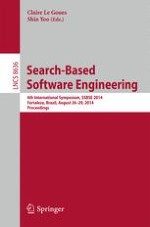This book constitutes the refereed proceedings of the 6th International Symposium on Search-Based Software Engineering, SSBSE 2014, held in Fortaleza, Brazil.
The 14 revised full papers presented together with 2 keynote addresses, 1 invited talk, 1 short paper, 3 papers of the graduate track, and 4 challenge track papers were carefully reviewed and selected from 51 submissions. Search Based Software Engineering (SBSE) studies the application of meta-heuristic optimization techniques to various software engineering problems, ranging from requirements engineering to software testing and maintenance.
